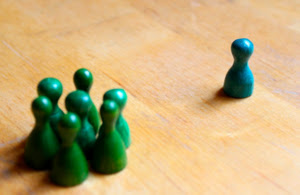In class: Everyone will receive a handout, and everyone with complete an individual handout. However, you will work together to determine the types of imagery used and examples from the text to support your selection.
This is due at the close of class.
For anyone who is absent, please copy and paste the following onto a google document, complete and share with me. Make sure you have given me share rights.
Part 1
Group practice: For each of the following identify the type of imagery: seeing /visual, hearing/auditory, smelling/ olfactory, tasting/ gustatory, or feeling/ sensory.
1. In the hard-packed dirt of the midway, after the glaring lights are out and the people have gone to bed, you will find a veritable treasure of popcorn fragments, frozen custard dribblings, candied apples abandoned by tired children, sugar fluff crystals, salted almonds, popsicles, partially gnawed ice cream cones and wooden sticks of lollipops. from Charlotte's Web by E.B. White
The type of imagery used is _____________________________.
Examples from the text that support this are: (insert examples) ___________________________________________________________________________
____________________________________________________________________________
____________________________________________________________________________
2. In the period of which we speak, there reigned in the cities a stench barely conceivable to us modern men and women. The streets stank of manure, the courtyards of urine, the stairwells stank of moldering wood and rat droppings, the kitchens of spoiled cabbage and mutton fat; the unaired parlors stank of stale dust, the bedrooms of greasy sheets, damp featherbeds, and the pungently sweet aroma of chamber pots. Patrick Suskind's novel, Perfume: The Story of a Murderer
The type of imagery used is __________________________
Examples from the text that support this are: (insert examples) _____________________________________
__________________________________________________________________________________
_______________________________________________________________________________
3. On rainy afternoons, embroidering with a group of friends on the begonia porch, she would lose the thread of the conversation and a tear of nostalgia would salt her palate when she saw the strips of damp earth and the piles of mud that the earthworms had pushed up in the garden. Gabriel Garcia Marquez One Hundred Years of Solitude
The type of imagery used is ____________________________________
Examples from the text that support this are: (insert examples)_________________________________________________________
_________________________________________________________________________________________
4. It commenced rainin one day an did not stop for two months. We went thru ever different kind of rain they is, cep'n maybe sleet or hail. It was little stingin rain sometimes, an big ole fat rain at others. It came sidewise an straight down an sometimes even seem to come up from the groun. Forest Gump by Winston Groom
The type of imagery used is ____________________________________
Examples from the text that support this are: (insert examples) _________________________________________________________
_____________________________________________________________________________
___________________________________________________________________________
5. Now small fowls flew screaming over the yet yawning gulf; a sullen white surf beat against its steep sides; then all collapsed, and the great shroud of the sea rolled on as it rolled five thousand years ago. Herman Melville Moby Dick
The type of imagery used is ____________________________________
Examples from the text that support this are: (insert examples)_________________________________________________________
_________________________________________________________________
__________________________________________________
Part 2
Group practice. For each of the following sentences, identify the imagery is 1) seeing/ visual, 2) hearing/ auditory, 3) smelling/olfactory, 4) tasting/ gustatory 5) touch/ tactile
1. The eerie silence was shattered by her scream. _______________________
2. Her face blossomed when she caught a glance of him. _______________________
3. He could hear his world crashing, when he heard the news. _______________________
4. She was like a breath of fresh air infusing life back into him. ________________________
5. The concert was so loud that her ears rang for days afterward. ________________________
6. The deep yellow hues of the sunset drowned in and mixed with the blues of the sea.____________
7. Mommy hauled her little baby up in the air, placed him on the bed and prodded her fingers in his squishy skin eliciting fits of belly-laughs. _____________________
8. Brown horned gazelle meandered about the tall grass blinking away the following flies; cushioned paws didn’t make sound and the gazelle didn’t know the danger lurking
behind it. ______________
9. Ja’Nae didn’t have to wait for the clock to strike 2, her mother stormed out of her room, slamming the door behind her and glaring at her daughter, daggers in her eyes._____________
10. The wings of the fan curved like a dog’s ears waggled with a raucous squeak at a speed that the air couldn’t reach the one sitting under it._____________











Comments